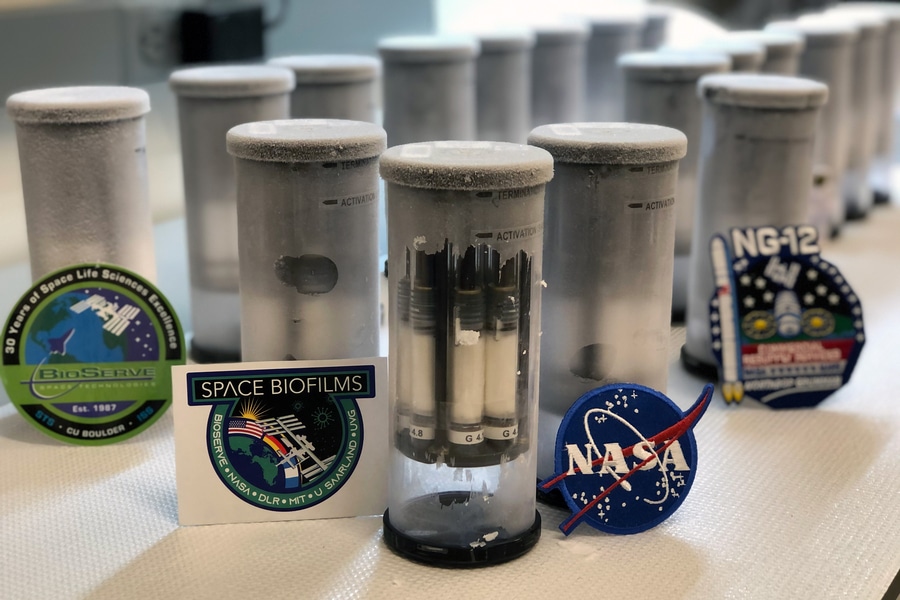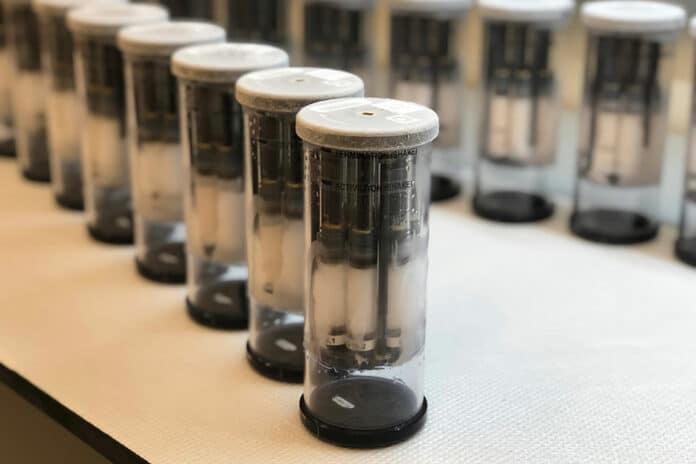Astronauts’ health and the effective operation of spaceship equipment are at risk due to bacterial biofilms’ unwelcome but inevitable presence. It is critical to comprehend how biofilms behave in microgravity to reduce the hazards that result from them.
As part of the Space Biofilms project, scientists investigated a variety of surfaces treated in different ways and exposed to a bacteria called Pseudomonas aeruginosa. This opportunistic pathogen can cause infections in humans, especially in hospitals.
Beginning in 2019, the surfaces were incubated inside the space station for three days. The outcomes demonstrate that lubricant-impregnated textured surfaces effectively avoided biofilm formation during their extended exposure in space.
Using surfaces coated with specific metals or oxides that kill microorganisms is one method of preventing biofilms. However, this method can fail if a layer of dead microbes accumulates on the surface, allowing biofilm to grow above it. But, with the liquid-infused surface that worked successfully in the ISS experiments, this was not the case; instead of killing the microbes, it prevented them from initially attaching to the surface.
The specific surface was silicon that had been etched to create a forest of tiny pillars. Then, silicon oil is applied to this spiky surface, drawing it into the roughness and holding it there using capillary action. This creates a smooth, incredibly slippery surface that greatly limits the adhesion of microorganisms and prevents them from building a biofilm.

To ascertain the variations brought on by the microgravity condition in orbit, identical tests were carried out on Earth and the space station. To the researchers’ surprise, the liquid-infused surface prevented microbe adherence much better in space than on Earth.
Kripa Varanasi of MIT said, “Previous tests on Earth had shown that these treated surfaces could significantly reduce biofilm adhesion. When the samples from the space station were retrieved and tested, “we found that these surfaces are extremely good at preventing biofilm formation in the space station as well.”
“This is important because past work has found that microgravity can significantly influence biofilm morphologies, attachment behavior, and gene expression.”
Varanasi is also a founder of LiquiGlide, which makes liquid-impregnated surfaces for containers to help their contents slide out.
Samantha McBride, Ph.D. ’20, said, “Thus, strategies that work well on Earth for biofilm mitigation may not necessarily be applicable to microgravity situations.”
Scientists noted, “Preventing biofilms will be especially important for future long-duration missions, such as to the moon or Mars, where the option of quickly returning fouled equipment or sick astronauts to Earth will not be available.”
“If further testing confirms its long-term stability and successful biofilm prevention, coatings based on the liquid-treated surface concept could be applied to a variety of critical components that are known to be susceptible to biofilm fouling, such as water treatment hoses and filters, or to parts that come in close contact with astronauts, such as gloves or food preparation surfaces.”
Biofilm development was reduced by around 74 percent in the samples from the ground, whereas it was reduced by about 86 percent in the samples from the space station. The outcomes were unexpected because past studies by other scientists had demonstrated that biofilm growth was considerably higher in space than on Earth. In these samples, the reverse was discovered.
Pamela Flores at the University of Colorado said, “While the tests used a specific and well-studied gram-negative kind of bacteria, she says, the results should apply to any gram-negative bacteria, and likely to gram-positive bacteria as well. They found that the surface areas where no bacterial growth took place were covered by a thin layer of nucleic acids, which have a slight negative electric charge that may have helped prevent microbes from adhering. Both gram-positive and gram-negative bacteria have a slight negative charge, which could repel them from that negatively charged surface.”
Varanasi says, “Other anti-fouling surfaces work mostly on a biocidal property, which usually only works for a first layer of cells because after those cells die, they can form a deposit, and microbes can grow on top of them. So, usually, it’s been a tough problem.”
Journal Reference:
- Flores, P., McBride, S.A., Galazka, J.M. et al. Biofilm formation of Pseudomonas aeruginosa in spaceflight is minimized on lubricant-impregnated surfaces. npj Microgravity 9, 66 (2023). DOI: 10.1038/s41526-023-00316-w
